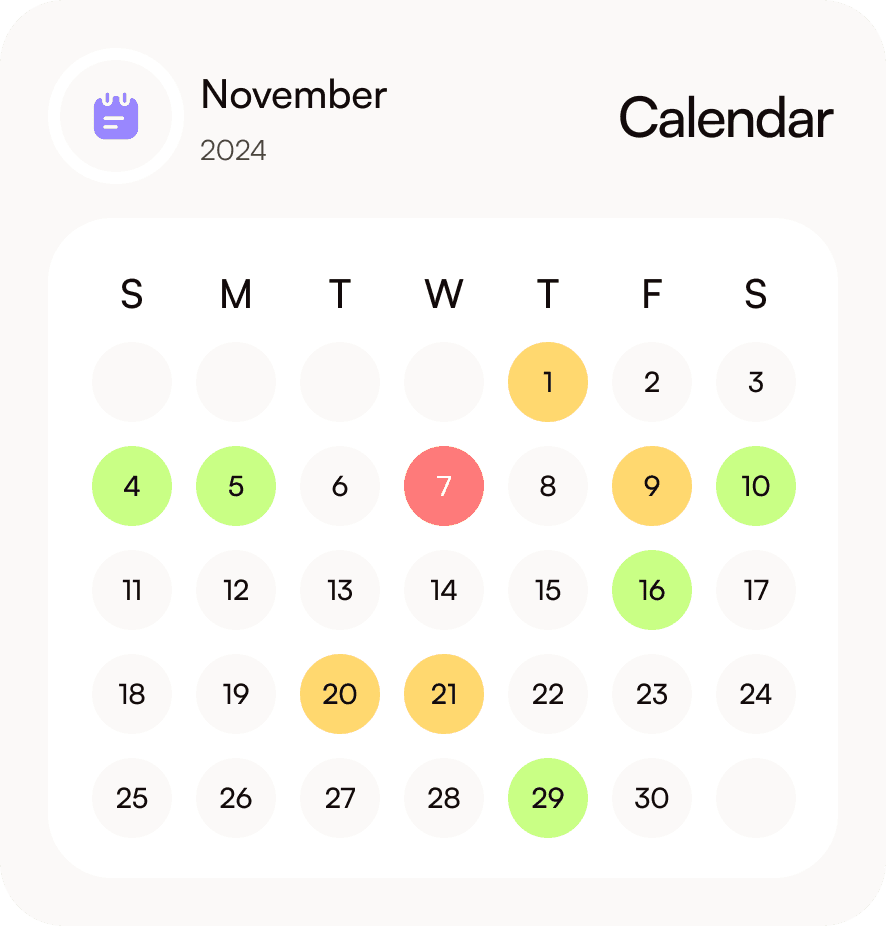Apr 26, 2025
Learn how to design a branded booking page that enhances user experience and boosts conversions with essential features and best practices.
How to Create a Branded Booking Page That Converts
Your booking page isn't just a tool - it's often your customer's first impression of your business. A great booking page can increase conversions by being simple, professional, and aligned with your brand. Here's what you need to know:
Make it Easy to Use: Simplify the booking process with clear service descriptions, minimal forms, and online payment options.
Showcase Your Brand: Use your logo, brand colors, and tone to create a consistent experience.
Optimize for Mobile: Ensure your page works well on smartphones with fast loading times and easy navigation.
Build Trust: Add testimonials, contact details, and awards to reassure visitors.
Use Advanced Tools: Automate reminders, sync calendars, and analyze booking data to improve results.
Your brand-new Booking Page | Schedo
Must-Have Elements for Booking Pages
To create a booking page that turns visitors into confirmed appointments, you need the right mix of features. These elements ensure a smooth scheduling experience while showcasing your professionalism.
Setting Up Your Scheduling Software
Start by configuring your availability, defining the services you offer, and syncing your calendars. Real-time calendar syncing helps you avoid double bookings and keeps everything running smoothly.
"I used to lose clients just because they ignored my booking link. With Schedo's AI, meetings get booked directly from emails - zero friction. I've seen a 40% increase in scheduled calls since switching!"
Martin J, Sales Consultant [1]
Creating Your Booking Page URL
A custom, branded URL helps establish your business identity before clients even land on your page. For example:
/book/business-strategy – Highlights your brand
/book/30min-consultation – Clearly specifies the meeting type
Once your URL is set, streamline the entire booking process to make it as easy as possible for visitors to confirm their appointments.
Simplify the Booking Process
Make the experience straightforward by presenting services clearly, cutting unnecessary steps, and collecting only the most important details. Include payment options for added convenience.
Key elements to include:
Clear descriptions of services with duration
Minimal data collection to avoid overwhelming users
Payment options for online transactions
Offer both online and in-person sessions with clear instructions to reduce no-shows and set the right expectations.
[1] Customer feedback provided via Schedo.app
Adding Your Brand Elements
Your booking page should showcase your brand identity, creating a unified experience that builds trust and encourages bookings. Here's how to effectively incorporate your brand into the page. A well-designed booking process with consistent branding can turn visitors into confirmed clients.
Logo and Design Elements
Make sure your booking page reflects your visual brand identity:
Brand Colors: Use your brand's color palette for headers and accents, while keeping the background neutral for better readability.
Logo: Place your logo prominently at the top (recommended size: 600×120px) for immediate recognition.
Fonts: Match the typography from your website to maintain a cohesive look.
Writing Brand-Aligned Copy
The text on your booking page should match your brand’s tone and guide users toward making a booking.
Service Descriptions
Be specific and value-focused. For example, label a session as "30-minute strategy session" instead of "30-minute consultation" to emphasize its purpose.
CTA Buttons
Use clear, action-oriented phrases like "Book Appointment." Position these buttons above the fold and use contrasting colors to make them stand out.
Trust-Building Content
Add elements that reassure visitors and establish credibility:
Client testimonials
Your office address and phone number
Awards or mentions in media
Links to your social media profiles [1]
Value Proposition
Highlight an offer, such as a free 30-minute expert session, to communicate benefits and encourage users to book.
Improving Page Design and Results
A well-designed, user-friendly booking page can make scheduling easy, helping you turn more visitors into customers. Here are three practical tips to enhance your page.
Making Your Page Mobile-Ready
Design your page to work seamlessly on smartphones. Use a simple layout without unnecessary clutter. Choose fonts and sizes that are easy to read on smaller screens. Compress images to keep loading times fast. Dropdown menus can also simplify navigation by reducing long lists [1].
Once your page is mobile-friendly, focus on making your calls-to-action (CTAs) stand out.
Placing Book Now Buttons
Place your CTAs in key spots like above the fold and mid-page, so users can book at any moment. Use clear labels such as "Book Appointment", pair them with bold, contrasting colors, and include a short explanation of what users gain by clicking [2].
Building Client Trust
Reassure visitors by adding trust-building elements. Include testimonials, awards, contact details, and social media links near your CTAs. You can also add a short introductory video to give your brand a personal touch and make it more relatable [3].
Using Advanced Booking Tools
These tools not only enhance your scheduling process but also help keep clients engaged while cutting down on manual follow-ups.
Setting Up Automatic Notifications
Automated notifications, like email or SMS reminders, can significantly reduce no-shows. For example, appointment reminders have been shown to decrease no-shows for sales calls and discovery sessions by about 31% [5]. Since 88% of people check their email daily, these reminders help ensure your messages are seen [4].
Here are some key notifications to set up:
Instant confirmation emails: Include all appointment details right after booking.
Reminders before appointments: Send via email or SMS to keep clients on track.
Follow-up emails: Gather feedback and encourage repeat bookings.
Connecting Your Calendar
Sync your work and personal calendars to simplify scheduling. By linking multiple calendars, you can display only available slots and automatically block off personal events. This helps you avoid double-booking and keeps your schedule organized.
Using Booking Reports
Analyze booking data to make smarter decisions. Reviewing metrics can help you adjust your page layout, fine-tune services, and improve scheduling options. These tweaks ultimately lead to better booking rates and happier clients.
Tracking Page Success
Keep an eye on key metrics and experiment with A/B testing to improve your booking page's conversion rate.
Key Metrics to Monitor
Set up tracking in your scheduling software [7] and integrate your Google Analytics code [8]. Pay attention to these metrics:
Conversion rate: Bookings ÷ Visits
Time spent on page: How long users stay
Bounce rate: Percentage of users leaving without interacting
Traffic sources: Where your visitors are coming from
Most-booked services: Which offerings attract the most interest
These numbers can help you spot areas needing improvement and guide your A/B testing strategy.
A/B Testing: Refining Your Page
"A/B testing compares two page versions to find the higher-converting design." - Ygor Durães, Hunt Interaction [6]
When testing, focus on one element at a time to pinpoint what drives better results. Here are some ideas:
Headlines: For example, a recent A/B/C test that tweaked only the headline copy resulted in a 40% difference in conversion rates [6].
CTA buttons: Experiment with text, colors, and placements.
Form fields: Try adjusting the number of required fields or shortening the form.
Layout: Test different arrangements of elements on the page.
"Even after rewriting your landing page copy and improving it 10x, you should still A/B test it. The gut feeling is silver. Data is gold." - Yannick [6]
Make sure your page gets enough traffic to generate meaningful results, and always test one variable at a time for clear insights.
Conclusion
A high-performing branded booking page combines a straightforward design, user-friendly scheduling process, and clear trust indicators. Regularly analyze metrics and use A/B testing to fine-tune elements like layout, copy, and calls-to-action. Treat the page as an evolving tool to continuously improve conversions.
Explore expert tips, trends, and strategies to optimize your booking experience and streamline your workflow.







